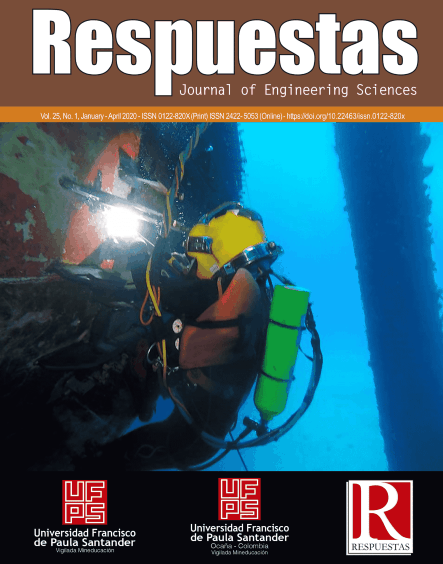Desarrollo de un sistema de escotilla para la determinación de hidrógeno difusible en soldadura submarina
Development of a hatch system for the determination of diffusible hydrogen in underwater welding
Contenido principal del artículo
El diseño e implementación del mecanismo de escotilla, tiene como finalidad optimizar el desarrollo de simulaciones de soldadura ejecutadas en el Laboratorio de Robótica, Soldadura y Simulación. El proyecto hace parte de la actualización de tecnologías aplicadas a ciencias del mar, y posibilitará evaluar la influencia de los parámetros de soldadura en los procesos SMAW y FCAW, especialmente en lo que se refiere al contenido de hidrógeno difusible en cuerpos de prueba soldados en diferentes profundidades. Debido a las especificaciones impuestas por las normas de cromatografía de gases aplicadas a la soldadura, las pruebas deben desarrollarse en intervalos cortos, lo cual exige un proceso rápido. Esta investigación fomentará la evaluación de electrodos comerciales y promoverá el desarrollo de nuevos consumibles.
Descargas
Datos de publicación
Perfil evaluadores/as N/D
Declaraciones de autoría
Indexado en
- Sociedad académica
- Universidad Francisco de Paula Santander
- Editorial
- Universidad Francisco de Paula Santander
Detalles del artículo
B. D. Silvestre and PRT Dalcol, “Geographical proximity and innovation: Evidences from the Campos Basin oil & gas industrial agglomeration-Brazil”, Technovation, vol. 29, no. 8, pp. 546-561, 2009.
M. C. Joshi, D. S. Rautela, R. Chauhan and S. Suyal, “Scrutinize Research on Underwater Welding Process: A Review”, IOSR Journal of Mechanical and Civil Engineering., vol. 13, no. 5, pp. 74-78, 2016.
C. E. Grubbs, A. E. Bertelmann, S. Ibarra, et. al., Welding Handbook Material and Applications-Part 1. Estados Unidos: AWS, 1996.
K. Verma and H. K. Garg, “Underwater Welding-Recent Trends and Future Scope”, International Journal on Emerging Technologies, vol. 3, no. 2, pp. 115-120, 2012.
C. E. Grubbs and O. W. Seth, Underwater Wet Welding With Manual Arc Electrodes, ASCE National Water Resources and Ocean Engineering Convention, San Diego, Estados Unidos, 1976.
A. M. M. Uribe, A. Q. Bracarense, E. C. P. Pessoa and V. R. Santos, “Influência da Polaridade Sobre a Estabilidade do Processo de Soldagem Subaquática Molhada com Eletrodo Revestido”, Soldagem & Inspeção, vol. 22, no. 4, pp. 429-441, 2017.
A. M. Pope, S. Liu, J.C.G. Teixeira, et. al., “Use of Nickel to Improve the Mechanical Properties of High Oxygen Underwater Wet Welds”, 3th OMAE/ International conference on offshore mechanics and arctic engineering, Copenhagen, Denmark, 1995.
W. C. D. Silva, A. Q. Bracarense and E. C. P. Pessoa, “Efeito da profundidade de soldagem no hidrogênio difusível de soldas molhadas”, Soldagem & Inspeção, vol. 17, no. 4, pp. 298-305, 2012.
M. Rowe and S. Liu, “Recent developments in underwater wet welding”, Science and Technology of Welding and Joining, vol. 6, no. 6, pp. 387-396, 2013.
W. C. D. Silva, L. F. Ribeiro, A.Q. Bracarense and E. C. P. Pessoa, “Effect of the Hydrostatic Pressure in the Diffusible Hydrogen at the Underwater Wet Welding”, 31st Internacional Conference on Ocean, Offshore and Artic Engineering, volume 6: Materials Technology, Polar and Arctic Sciences and Technology, Petroleum Technology Symposium, Rio de Janeiro, Brazil, 2012.
A. M. M. Uribe, A. Q. Bracarense, E. C. P. Pessoa, et. al., “Metodología de Diseño de una Escotilla de Inspección para Recipientes a Presión”, Investigación e Innovación en Ingenierías, vol. 5, no. 1, pp. 8-23, 2017.








